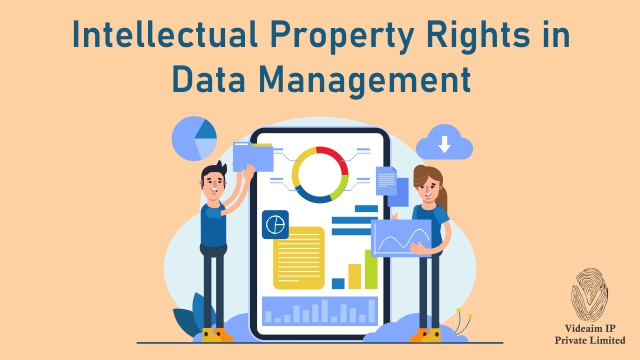
Intellectual Property (IP) in data management is a critical consideration for organizations that handle, analyze, store, and share data. As data becomes increasingly valuable, understanding how IP intersects with data management practices is essential for protecting assets, fostering innovation, and ensuring compliance with legal frameworks.
Types of Intellectual Property Relevant to Data
Intellectual Property refers to creations of an asset that have commercial value and are protected by law. The primary types of IP relevant to data management include: The primary types of IP relevant to data management include:
- Copyrights: Protect original works of authorship, such as databases, software code, and documentation.
- Patents: Protect inventions and processes, including data processing methods and algorithms.
- Trade Secrets: Protect confidential business information, such as proprietary data sets, methodologies, and analytics techniques.
- Trademarks: Protect brand identifiers but can also extend to data products or services.
- Data Rights: Specific legal rights associated with data ownership, usage, and distribution.
Copyright and its application to Data Management
Raw data on their own are considered facts and thus cannot be copyrighted. However, data that are gathered together and expressed in a unique and original way, can be copyrightable. Like, presentation of data in a database, database management software for their source and object code, etc.
Patent and its application to Data Management
Methods or systems for processing, storing, or securing data may be patented, especially in data-driven technologies like machine learning or data compression.
However, it is important that innovative data processing algorithms and methods can be patented only if they meet the criteria of novelty, non-obviousness, and industrial application.
Trade secret and its application to Data Security
Data can be protected as a trade secret if it has commercial value, isn’t generally known, and reasonable measures are taken to keep it confidential. Like, Confidential data, such as customer lists or internal analytics, can be protected as trade secrets.
Data Rights and its application to Data Sharing
Data right defines ownership and usage rights, often defined in data-sharing agreements. These agreements can clarify access, permissible uses, and obligations regarding data security and confidentiality.
Best Practices for Managing IP in Data
- Data Ownership Policies: Establish and communicate clear policies regarding data ownership, especially in collaborative and multi-stakeholder environments.
- Robust Licensing Agreements: Draft comprehensive licensing agreements that specify usage rights, restrictions, and obligations to protect IP rights and avoid infringement.
- Implement Strong Security Measures: Use encryption, access controls, and monitoring to protect proprietary data and trade secrets from unauthorized access and breaches.
- Regular IP Audits: Conduct periodic audits to identify and assess IP assets related to data, ensuring they are adequately protected and leveraged.
- Employee Training and Awareness: Educate employees about IP rights, data management policies, and the importance of protecting proprietary information.
- Legal Compliance: Stay informed about relevant laws and regulations affecting data management and IP, ensuring that practices remain compliant to avoid legal penalties.
Conclusion
Intellectual Property plays a pivotal role in data management, influencing how data is owned, protected, utilized, and shared. Proper IP management not only safeguards valuable data but also drives innovation, competitiveness, and long-term success in the data-driven economy.
